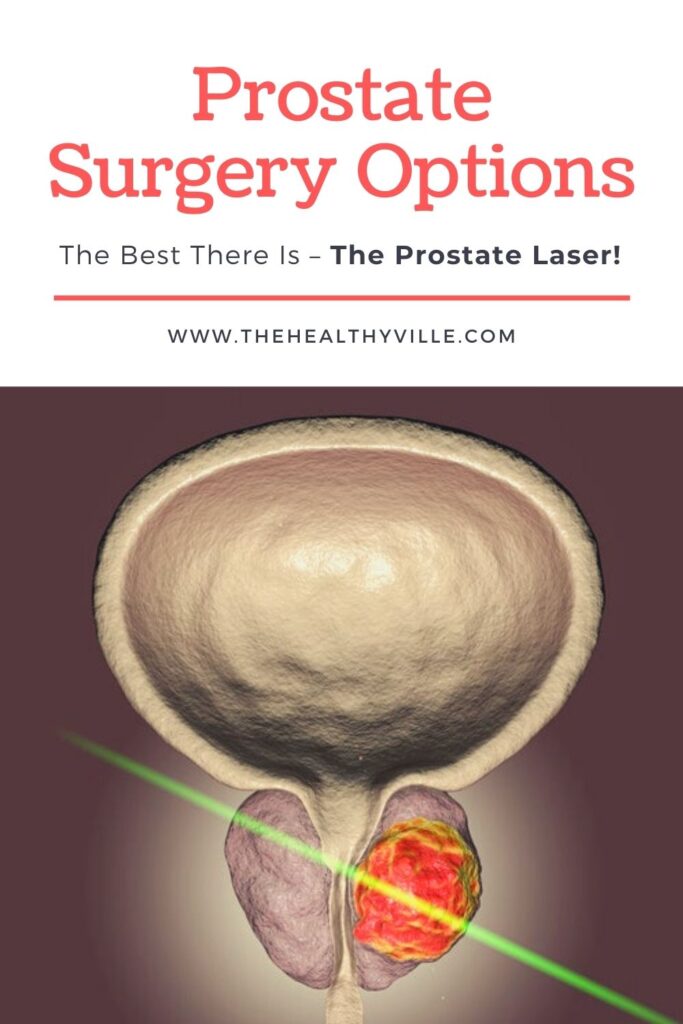Prostate surgery options vary depending on the problem, but if suffering from benign prostatic hyperplasia, the prostate laser is the best!
The prostate laser is one of the most important innovations of the last 25 years for the treatment of benign prostatic hyperplasia. It is also great for treating other conditions derived from obstruction of the urethra.
The prostate laser is a technique developed in the United States and which has been carried out since 1998 with remarkable results. Statistics indicate that it is one of the most comfortable, safe and effective prostate surgery options to treat benign prostate hyperplasia, popularly known as an enlarged prostate.
One of the main advantages of prostate laser is that it is a minimally invasive procedure, which reduces the possibility of complications. The minimal intervention allows both the procedure and the postoperative period to be much more comfortable.
So far, estimations that around 200,000 patients in the world have been treated with prostate laser. In this regard, several studies have been published, and in general the idea of the safety and efficacy of this method is reinforced. It is the most important advance in prostate surgery options in recent decades to treat benign prostatic hyperplasia.
The best of all prostate surgery options – The prostate laser
The prostate is a gland, as you may as well know, part of the male reproductive system. It produces a fluid that mixes with sperm in ejaculation. This gland surrounds the urethra, which is a tube that connects the bladder with the outside.
With age, it is common for the prostate to begin to enlarge. This growth puts pressure on the urethra, making it difficult to urinate or empty the bladder. This manifests as decreased force when urinating, more frequent urination and more nocturnal urination.
This is what doctors call prostatic hyperplasia (BPH). The prostate laser allows to alleviate the symptoms, from moderate to severe, that are due to this disease. The laser contracts or removes excess tissue, which is what obstructs the passage of urine.
Why do doctors carry it out?
Choosing this procedure takes into account the size of the prostate, the patient’s health, the equipment available and the training of the treating physicians. In some cases, doctors use laser surgery to prevent or treat conditions resulting from a blockage in the urine flow.
The prostate laser is able to solve, or at least alleviate, frequent urinary infections, an injury to the bladder or kidneys that obstructs the passage, incontinence, total obstruction by bladder stones, or bleeding in the urine.
The main advantages of laser surgery are:
- Lower risk of bleeding: This is very convenient for those with bleeding disorders or taking blood thinners.
- Reduction of hospital stay: This is generally an outpatient procedure and only in some cases requires an overnight stay in the hospital.
- Faster recovery.
- Less need for a catheter: usually the patients only needs a 24-hour catheter postoperatively.
- Immediate results.
How is it the procedure?
Lasers use concentrated light that generates intense and precise heat. There are several types of prostate laser surgery, among which three stand out:
- Photoselective vaporization: The laser dissolves or vaporizes excess tissue.
- Holmium laser prostate ablation: Similar to above, but uses a different type of laser.
- Holmium laser prostate enucleation: allows the doctor to cut excess tissue, and then cut the prostate tissue into small pieces that need removal. It is suitable when the size of the prostate is very large.
Whatever the method, it begins with a health assessment to see if the patient is fit. If it is, laser surgery occurs in an operating room, where the patient gets epidural anesthesia first. The doctor inserts a fiber through the urethra and through an optical device the light propels.
The same laser exerts a photocoagulation effect that closes the wound to prevent bleeding, deep necrosis, and irritation. Recovery is quick, to the point that it almost never takes more than 24 hours.
Risks and other information of interest about the prostate laser
Symptoms of irritation, such as itching or increased frequency of urination, reappear only in 5% of cases, but these usually disappear in a short time with an anti-inflammatory treatment. In 3% of cases there is blood in the urine, which is you address by drinking more liquid.
Retrograde ejaculation appears in a range of between 21 and 45% of men who have been treated with prostate laser. With more conventional methods the incidence is between 70 and 90%.
On average, urinary flow increases by 200% in those who undergo this procedure. The estimated degree of satisfaction of the patients is 95%. Normally, it only takes two or three days to return to normal activities.
It turns out to be a more comfortable procedure than conventional surgery, and it is a therapeutic option that you can discuss with your doctor. If you suffer from prostate problems, it will be a health professional who will give you the precise indications.
Don’t forget to SHARE about prostate surgery options and prostate laser with your friends and family on your social networks!

